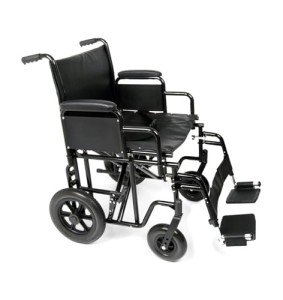10 Fundamentals To Know Wheelchair Bariatric Transit 24 Inch You Didn't Learn In School

Bariatric Transit 24 Inch Wheelchair
A bariatric wheelchair is perfect if you require a chair with a bigger seat width and greater weight capacity. This resilient wheelchair has a nylon cushioned seat that extends 24 inches wide with swing-away footrests. My Mobility Scooters has considerable 4 caster mobility and attendant locks for safe stops. The heavy-duty slide tube frame can support as much as 450 pounds.
Weight Capacity
When choosing a wheelchair on your own or for a liked one, it is important to think about the weight capacity. Basic wheelchairs can accommodate approximately 250 pounds, however bariatric chairs have the capability to support as much as 700 pounds. This difference in capacity is the main reason that bariatric wheelchairs are tougher and much heavier than standard designs.

To help drivers securely transport passengers who utilize bariatric wheelchairs, it is necessary to have cars geared up with proper equipment. This includes wheelchair lifts and ramps that can handle the increased size and weight of the chair. In addition, chauffeurs need to receive training on how to navigate these large mobility aids.
The Medline folding extra wide bariatric transport wheelchair has a large 24" seat and a carbon steel frame with rust- and chip-resistant chrome plating. It likewise includes easy-to-clean vinyl upholstery and swing-away footrests with a push-button adjustable height function. This durable wheelchair has a weight capacity of 500 pounds.
When picking a wheelchair, it is very important to request advice from a healthcare company or mobility professional. They can evaluate your physical condition and recommend the finest mobility option for you. They can also assist you identify if Medicare or private insurance coverage covers the expense of your wheelchair.
Wheelchair Frame
A wheelchair frame is the main assistance system that holds the other parts of the chair. The frames are made from a variety of materials, consisting of aluminum, titanium, and carbon fibre. Rigid manual wheelchairs are developed with efficiency in mind and use the concepts of sports bike frames-- triangles are one of the greatest shapes offered and engineers have actually used this understanding to develop frames that produce a stiff system that uses less energy for propulsion than more flexible frames.
The choice of wheelchair frame is often based upon the requirements and top priorities of the client as evaluated by their OT/PT or other clinician. For example, a front frame angle is a crucial configuration as it affects how well the customer can transfer or self-catheterize. Likewise the seat to footplate height is an essential aspect for positioning and balance.
A lot of wheelchairs have the option to be configured with a fixed or reclining frame. For those who need a more steady chair for stability or for transport in vehicles, a fixed frame is best. This is especially true for those who require a bariatric chair with a wider seat width or greater weight capacity.
Folding frames have a conventional "cross-brace" or X style that permits the chair to fold by bringing the side rails together, although there are other styles available for collapsible chairs, such as a scissor brace frame (Kuschall Champion) which minimizes the variety of moving parts and therefore can be lighter than the cross-brace designs. Other choices for folding frames consist of swing-away legrests and detachable arms.
Many makers also offer a variety of choices for the wheelchair frame front end, such as the frame angle. A 90 degree frame angle positions the feet at a natural position for pushing, while a 75 degree frame angle places the feet more forward. The option of frame angle should be carefully thought about as the more forward position may make it tough for the wheelchair user to get over challenges or might cause a wheel capturing on dropped curbs and developing vibration.
Stiff frames are usually made from aluminium, although some models have a double tube building that resembles the sport frames used in cycling, to assist increase strength and stability. Carbon Fibre is another product used in the frame building and construction of some wheelchairs, offering an even stiffer and lighter frame.
